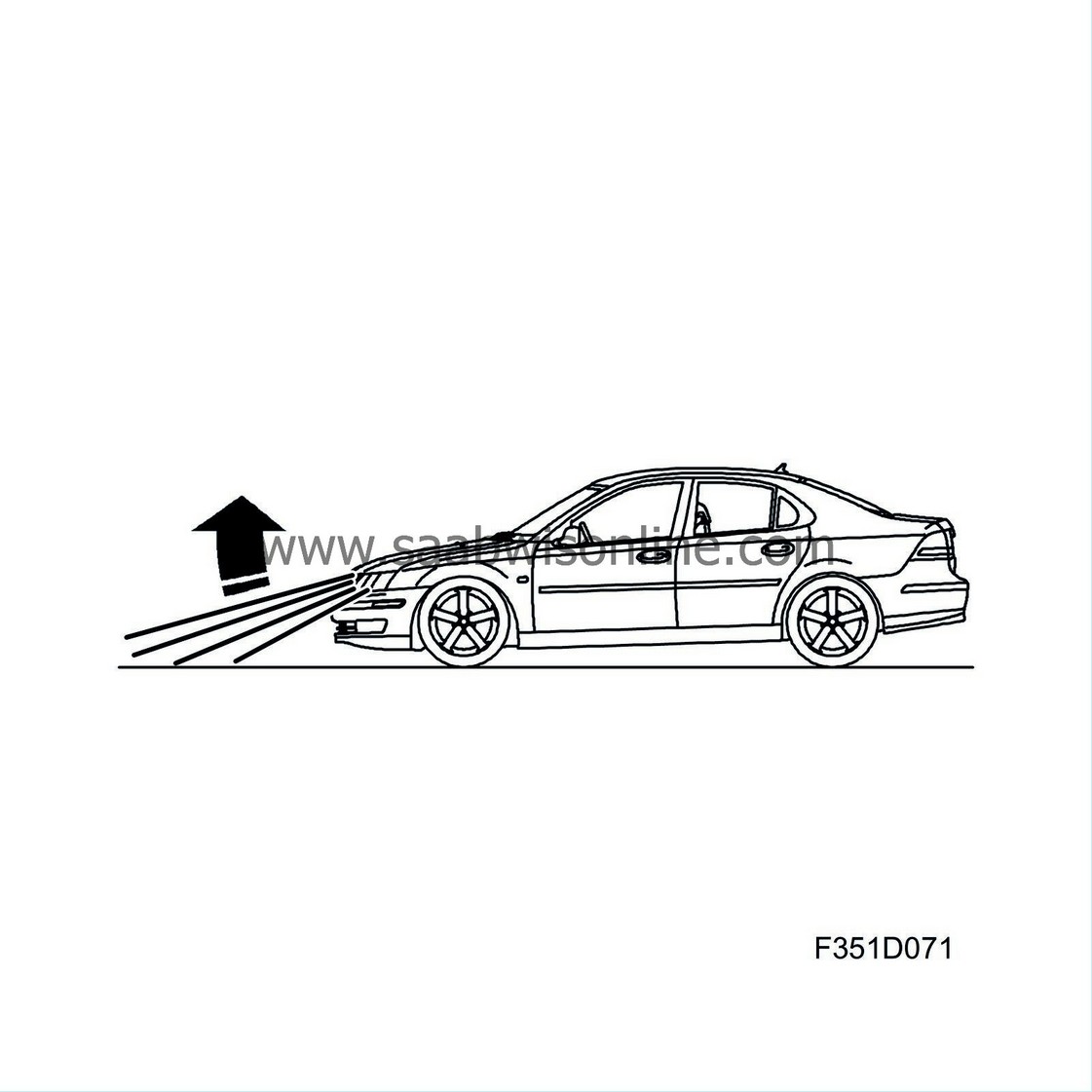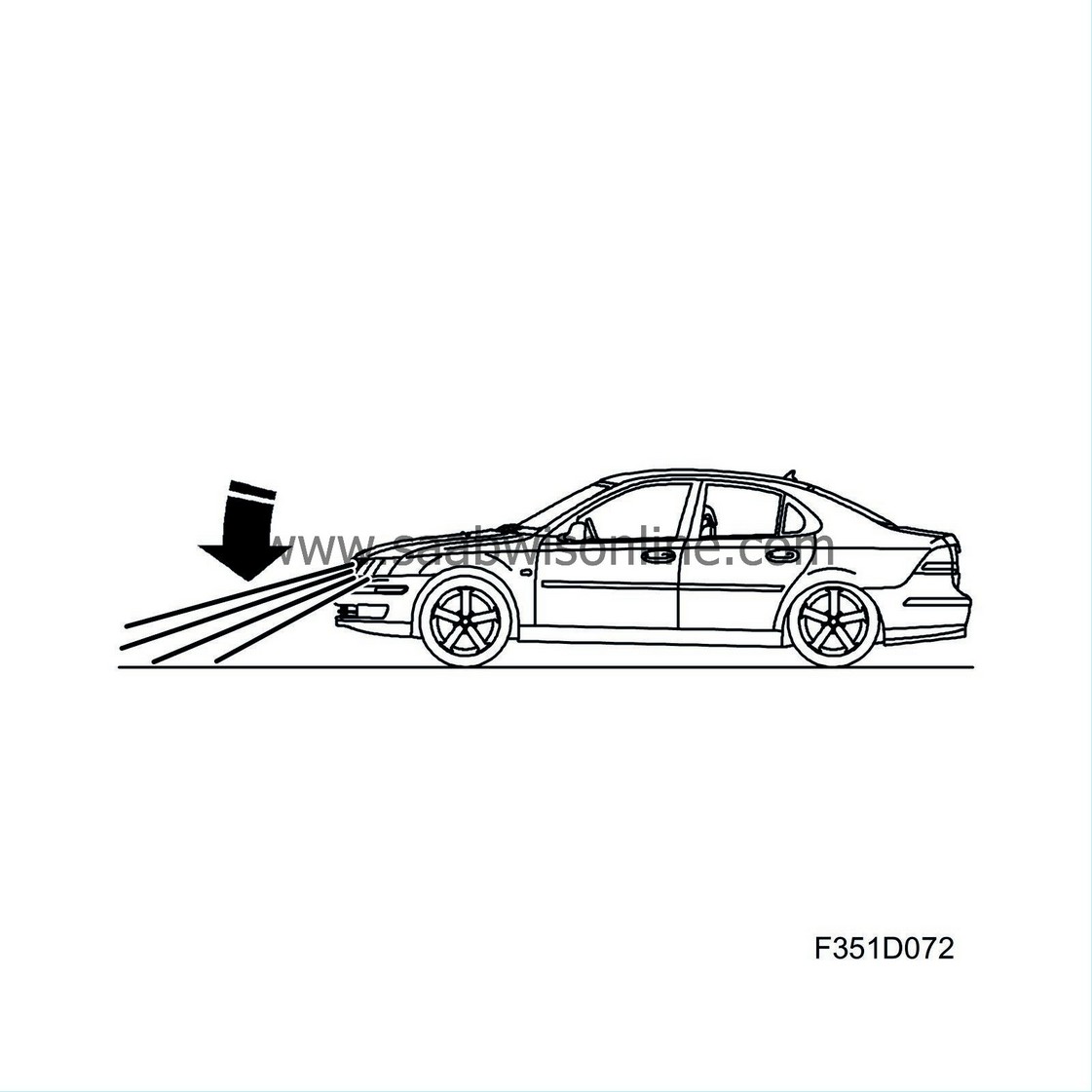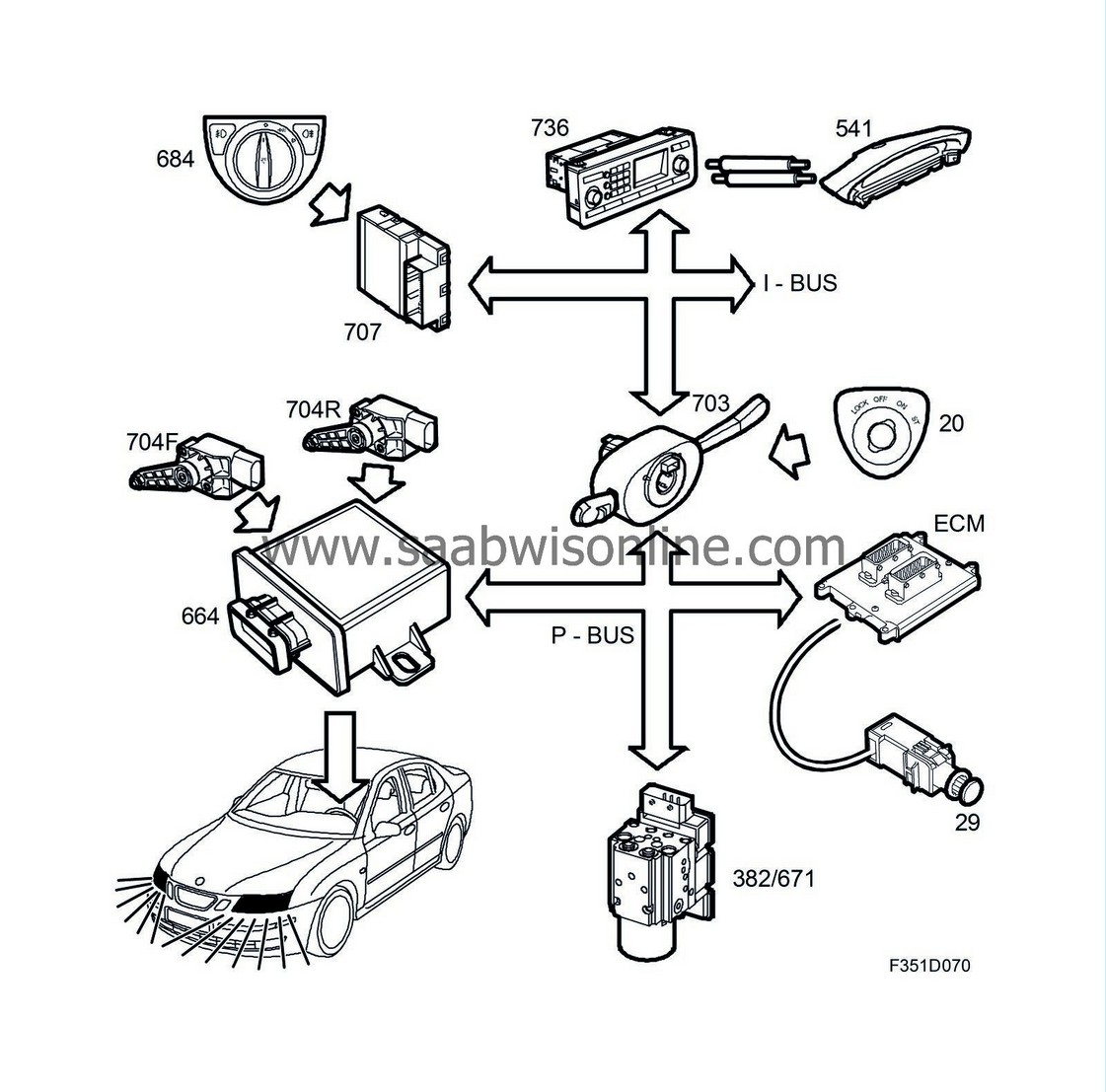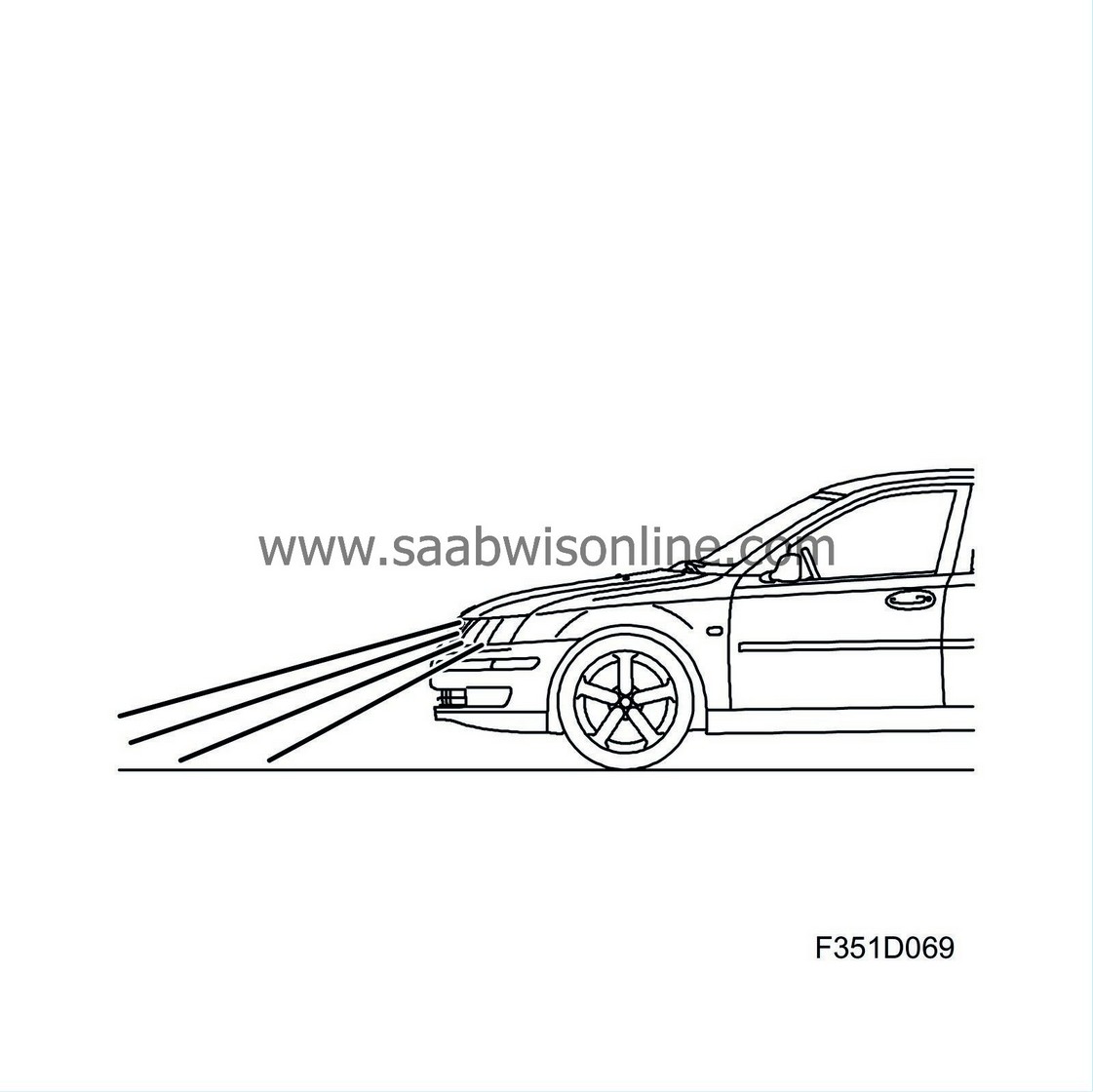Automatic headlamp levelling, detailed description
| Automatic headlamp levelling, detailed description |


The adjustment system is fitted with two load angle sensors placed on the front and rear axles. The sensors detect the height of the front and rear of the car. The sensors are connected to an AHL control module that interprets the information from the sensors together with information on vehicle speed and brake pedal status. Each headlamp contains a stepper motor that is controlled by the AHL control module.
The system is calibrated automatically once the engine has started. The stepper motors are activated to the lowest position and then go up to the correct position based on the height/inclination of the vehicle chassis.
Upon a system fault, the headlamp beams are adjusted to a safety level slightly below the normal level. At the same time, the message "Headlamp levelling not working. Contact workshop" is displayed in SID.
The load angle sensors are supplied 5 V from AHL control module (664) pin 8 to front sensor (704F) pin 5 and from control module pin 9 to rear sensor (704R) pin 5. Pin 1 of the sensors is grounded in AHL control module pin 7 for the front sensor and pin 10 for the rear sensor. The sensors provide information to the control module in the form of a PWM signal. This signal comes from pin 6 of the sensors. The AHL control module receives the information from the front sensor on pin 5 and from the rear sensor on pin 6.

The AHL system's adjustment reaction depends on the following:
| • |
Information from the sensors 704F/704R
|
|
| • |
Light switch position
|
|
| • |
Vehicle speed
|
|
| • |
Brake pedal status
|
|
The adjustment system reaction is described in the table below.
Headlamp levelling system reaction
| Vehicle status | Headlamps On/Off | Adjustment system reaction |
| Stationary car | Off | No reaction |
| On | No reaction | |
| Stationary car with load change | Off | Slow reaction |
| On | Quick reaction | |
| Vehicle moving at constant speed | Off | Slow reaction |
| On | Relatively quick reaction | |
| Vehicle speed change (acceleration/retardation) | Off | Slow reaction |
| On | Reaction based on acceleration/retardation |



